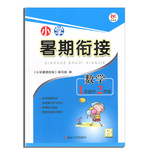
�������
������������ij����ѧ�������Ϊ��İĴ����DZ���Timд������ʼ�����������������һЩ���ξ��㣬ϣ��Tim�����������Ρ���Ҫ���ݰ�����
1������ش���ԭ����ͨ�������������ˡ�
2���ص�����������ξ��㣬�磺�Ϻ�������ų���ַ��Ӧ����Ժ��ַ�ȡ�
ע�⣺1������100���ң���ͷ�ͽ�β��Ϊ��д�ã����������ܴ�����
2�������ʵ�����ϸ�ڣ���ʹ�������ᡣ
�ο��ʻ㣺����ų�--the ancient city of Shangqiu Ӧ����Ժ--Ying tian Academy
�Ϻ�--the South Lake
Dear Tim,
Welcome to my hometown, Shangqiu. ___________________________________________
_______________________________________________________________________________
_______________________________________________________________________________
_______________________________________________________________________________
Yours sincerely,
Li Hua
 ѧ���������ν��Ͼ���ѧ������ϵ�д�
ѧ���������ν��Ͼ���ѧ������ϵ�д� Happy holiday���ּ��������ҵ�㶫���������ϵ�д�
Happy holiday���ּ��������ҵ�㶫���������ϵ�д�
| �꼶 | ���пγ� | �꼶 | ���пγ� |
| ��һ | ��һ��ѿγ��Ƽ��� | ��һ | ��һ��ѿγ��Ƽ��� |
| �߶� | �߶���ѿγ��Ƽ��� | ���� | ������ѿγ��Ƽ��� |
| ���� | ������ѿγ��Ƽ��� | ���� | ������ѿγ��Ƽ��� |
��Ŀ������Ӣ�� ��Դ��2015-2016ѧ�꼪���ӱ߶��и߶���ѧ����ĩӢ���Ծ��������棩 ���ͣ��������
I had just got up and was about to cook my breakfast _________the telephone rang, but it was hung up ___________ I could answer it.
A. when; before
B. when; until
C. while; before
D. as; after
�鿴�𰸺ͽ���>>
��Ŀ������Ӣ�� ��Դ��2016�걱���ж�����������ѧ����ĩ����Ӣ���Ծ��������棩 ���ͣ��������
�������Ǻ�����ѧ����ѧ��������������Mr.Blackдһ���ţ��������μ������꼶���е�Ӣ�����ᣨreading circle������ʼ������ݰ�����
���ܶ����������Ϣ�����磺ʱ�䡢�ص㡢����ݵȵȣ���
˵���㷢�������ԭ��
ѯ�ʶԷ�������
ע�⣺
1. ����������50��
2. ��ͷ�ͽ�β�Ѹ������������ܴ�����
Dear Mr. Black��
.
.
.
.
.
.
Yours��
Li Hua
�鿴�𰸺ͽ���>>
��Ŀ������Ӣ�� ��Դ��2015-2016ѧ���Ĵ�Ӫɽ�ػ�����ѧ�߶�12�¼��Ӣ���Ծ��������棩 ���ͣ��������
the difficult maths problem, I have consulted Professor Russell several times.
A. Working out B. Worked out C. To work out D. Work out
�鿴�𰸺ͽ���>>
��Ŀ������Ӣ�� ��Դ��2016���Ĵ�ʡ����12���¿�Ӣ���Ծ��������棩 ���ͣ��������
The electronic red-packet has been so ______ that AliPay and Tencent Wechat compete against each other openly and secretly since the beginning of this year.
A. popular B. convenient C. favorable D. arbitrary
�鿴�𰸺ͽ���>>
��Ŀ������Ӣ�� ��Դ��2016���������и�����ѧ�ڽ�ѧ�������Ӣ���Ծ��������棩 ���ͣ���ѡ��
���ݶ������ݣ��Ӷ��ĺ��ѡ����ѡ��������հ״������ѡ�ѡ����������Ϊ����ѡ�
Many kids help out around the house with chores(��ͥ����), such as sweeping the floor, emptying the dishwasher, taking out the trash and so on. 1.
Paying kids for chores is one of the most hotly debated parenting topics, especially at a time where everyone is more concerned about their finances. The logic behind tying allowances to chores is clear. 2. So they should pay kids to do their jobs.
3. Susie Walton, a parenting educator and family coach, believes that by rewarding kids, parents are sending a message that work isn��t worth doing unless you get something in return. ��Running any kind of household is a team effort.�� Susie said. ��A home is a living space for everyone in the family. It��s important for kids to see that we all have responsibilities in the house, and that families decide together how they want their home to look, and how they are going to keep it looking like everyone wants it to look.��
4. They believe that getting a cash allowance or other rewards motivates kids to do chores, and it also teaches them real world lessons about how we need to work to earn money. ��Our goal is to encourage kids to earn rewards,�� says Chris Bergman, founder of Chore Monster. �� 5. ��
A. Many people hold the view.
B. In exchange, they get some pocket money or other rewards.
C. Other people think differently.
D. But some people do not think that kids should get rewards for doing chores.
E. Grown-ups get paid to do their jobs.
F. Kids need positive reinforcement��ǿ����to help motivate them.
G. Pay kids is sending a bad message.
�鿴�𰸺ͽ���>>
��Ŀ������Ӣ�� ��Դ��2015-2016ѧ��ɽ���ʹ�һ��������ѧ�Ͳ����и߶���ѧ����ĩӢ����������棩 ���ͣ��Ķ�����
At first sight the planet Mars(����)does not appear very welcoming to any kind of life. It has very little oxygen and water, the temperature at night is below 50 degrees and winds of 100 miles (161 kilometers)per hour cause severe dust storms. However, the surface of the planet seems to show that water flowed across it at some time in the past, and it is believed that there would be enough ice at the poles to cover the planet with water if it melted. Although there is no life on the Mars now, some scientists think there may have been some form of life a long time ago. At that time, the planet had active volcanoes(��ɽ); the atmosphere was thicker and warmer; and there was water. In fact, in some ways the Mars may have been similar to the Earth, where life exists.
Some people believe that the Mars could support life in the future if the right conditions were produced. The first step would be to warm the planet using certain gases which trap the Sun��s heat in the planet��s atmosphere. With warmth, water and carbon dioxide��������̼��, simple plants could begin to grow. These plants could slowly make the Mar s fit to live on. It is judged that the whole process might take between 100, 000 and 200, 000 years. In the meantime, people could begin to live on the planet in a special closed environment. They would provide a lot of useful information about conditions on Mars and the problems connected with living there.
s fit to live on. It is judged that the whole process might take between 100, 000 and 200, 000 years. In the meantime, people could begin to live on the planet in a special closed environment. They would provide a lot of useful information about conditions on Mars and the problems connected with living there.
1. According to the passage, the planet Mars has no __________on it.
A��animals B��mountains
C��dust D��winds
2. What is the topic of Paragraph 2?
A��Certain gases should be used to warm Mars.
B��Plants should be grown to make Mars fit to live on.
C��Mars could support life with right conditions in the future.
D��People could live on Mars in a special closed environment.
3. The most suitable title for the passage is __________.
A��No Life on Mars
B��A Study of Mars
C��The Future conditions on Mars
D��The Possibility of Life on Mars
�鿴�𰸺ͽ���>>
��Ŀ������Ӣ�� ��Դ��2016��ɽ���ൺ����ʮ���и���12���¿�Ӣ���Ծ��������棩 ���ͣ��Ķ�����
With around 100 students scheduled to be in that 9:00 am Monday morning lecture, it is no surprise that almost 20 people actually make it to the class and only 10 of them are still awake after the first 15 minutes; it is not even a surprise that most of them are still in their pajama��s(˯��). Obviously, students are terrible at adjusting their sleep cycles to their daily schedule.
All human beings possess a body clock. Along with other alerting systems, this governs the sleep/wake cycle and is therefore one of the main processes which govern sleep behaviour. Typically, the preferred sleep/wake cycle is delayed in adolescents, which leads to many students not feeling sleepy until much later in the evenings. This typical sleep pattern is usually referred to as the ��night owl�� schedule of sleep.
This is opposed to the ��early bird�� schedule, and is a kind of disorder where the individual tends to stay up much past midnight. Such a person has great difficulty in waking up in the mornings. Research suggests that night owls feel most alert and function best in the evenings and at night. Research findings have shown that about 20 percent of people can be classified as ��night owls�� and only 10 percent can be classified as ��early birds�� ------ the other 70 percent are in the middle. Although this is clearly not true for all students, for the ones who are true night owls, this gives them an excellent excuse for missing their lectures which unfortunately fall before midday.
1.What does the author stress in Paragraph 1 ?
A. Many students are absent from class.
B. Students are very tired on Monday mornings.
C. Students do not adjust their sleep patterns well.
D. Students are not well prepared for class on Mondays.
2.Which of the following is true according to Paragraph 2?
A . Most students prefer to get up late in the morning.
B. Students don��t sleep well because of alerting systems.
C .One��s body clock governs the sleep/wake cycle independently.
D. Adolescents�� delayed sleep/wake cycle isn��t the preferred pattern.
3.Which of the following is closest in meaning to the underlined word ��classified��?
A. Criticized B. Grouped
C. Organized D. Named
4.What does the text mainly talk about?
A. Functions of the body clock.
B. The ��night owl�� phenomenon.
C. Human beings�� sleep behaviour.
D. The school schedule of ��early birds��.
�鿴�𰸺ͽ���>>
��Ŀ������Ӣ�� ��Դ��2016��ӱ���ǿ��ѧ������ѧ�����п���Ӣ���Ծ��������棩 ���ͣ��Ķ�����
Guide to Stockholm University Library
Our library offers different types of studying places and provides a good studying environment.
Zones
The library is divided into different zones. The upper floor is a quiet zone with over a thousand places for silent reading, and places where you can sit and work with your own computer. The reading places consist mostly of tables and chairs. The ground floor is the zone where you can talk. Here you can find sofas and armchairs for group work.
Computers
You can use your own computer to connect to the wi-fi specially prepared for notebook computers; you can also use library computers, which contain the most commonly used applications, such as Microsoft Office. They are situated in the area known as the Experimental Field on the ground floor.
Group-study Places
If you want to discuss freely without disturbing others, you can book a study room or sit at a table on the ground floor. Some study rooms are for 2-3 people and others can hold up to 6-8 people. All rooms are marked on the library maps.
There are 40 group-study rooms that must be booked via the website. To book, you need an active University account and a valid University card. You can use a room three hours per day, nine hours at most per week.
Storage of Study Material
The library has lockers for students to store course literature. When you have obtained at least 40 credits, you may rent a locker and pay 400 SEK for a year��s rental period.
Rules to be Followed
Mobile phone conversations are not permitted anywhere in the library. Keep your phone on silent as if you were in a lecture and exit the library if you need to receive calls.
Please note that food and fruit are forbidden in the library, but you are allowed to have drinks and sweets with you.
1.Library computers on the ground floor .
A. help students with their field experiments
B. contain software essential for schoolwork
C. are for those who want to access the wi-fi
D. are mostly used for filling out application forms
2.A student can rent a locker in the library if he .
A. can afford the rental fee
B. attends certain courses
C. has nowhere to put his books
D. has earned the required credits
3.What should NOT be brought into the library?
A. Mobile phones. B. Orange juice.
C. Candy. D. Sandwiches.
�鿴�𰸺ͽ���>>
����ʡ������Υ���Ͳ�����Ϣ�ٱ�ƽ̨ | �����к���Ϣ�ٱ�ר�� | ����թƭ�ٱ�ר�� | ����ʷ���������к���Ϣ�ٱ�ר�� | ������Ȩ�ٱ�ר��
Υ���Ͳ�����Ϣ�ٱ��绰��027-86699610 �ٱ����䣺58377363@163.com